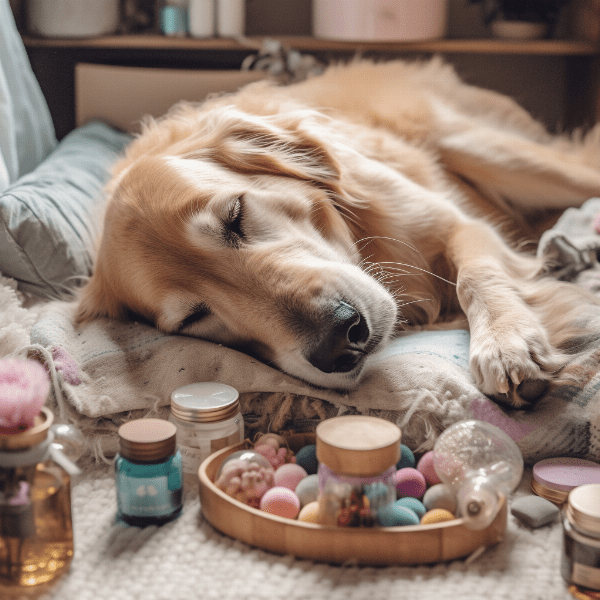Table of Contents
- Understanding Dog Separation Anxiety at Night
- Signs of Separation Anxiety in Dogs
- Causes of Dog Separation Anxiety at Night
- Prevention of Dog Separation Anxiety at Night
- Coping Strategies for Dog Separation Anxiety at Night
- Creating a Calming Environment for Your Dog
- Training Techniques to Reduce Separation Anxiety
- Natural Remedies for Dog Separation Anxiety at Night
- Seeking Professional Help for Dog Separation Anxiety
- Conclusion and Final Thoughts on Coping with Dog Separation Anxiety at Night
Understanding Dog Separation Anxiety at Night
Separation anxiety is a common problem among dogs, and it can be particularly challenging when it happens at night. When a dog experiences separation anxiety, they feel distressed and anxious when their owner or caregiver is not around. This feeling can be exacerbated at night when the dog is alone and there are fewer distractions to keep them occupied.
The Effects of Separation Anxiety
When a dog experiences separation anxiety, it can have negative effects on their physical and emotional well-being. They may become destructive, barking, whining, or howling excessively. They may also exhibit symptoms such as shaking, panting, pacing, and drooling. In some cases, dogs with severe separation anxiety may even harm themselves by chewing on objects or attempting to escape their surroundings.
The Importance of Identifying Separation Anxiety
It’s essential to identify whether your dog is experiencing separation anxiety or some other issue. Many symptoms of separation anxiety can be mistaken for behavioral issues, such as house soiling, destructive chewing, or excessive barking. By recognizing the signs of separation anxiety, you can work to address the root cause of the problem and help your dog feel more comfortable when they are alone.
Common Triggers of Separation Anxiety
There are several triggers that can cause separation anxiety in dogs. Common triggers include changes in the dog’s routine, such as a change in the owner’s work schedule or a move to a new home. Additionally, a traumatic event, such as the loss of a family member or a stay at a kennel, can also trigger separation anxiety.
By understanding the causes and effects of separation anxiety, you can take steps to help your dog cope with their anxiety and feel more secure when you are not around. In the next section, we will discuss the signs of separation anxiety in dogs, so you can recognize when your dog is experiencing this condition.
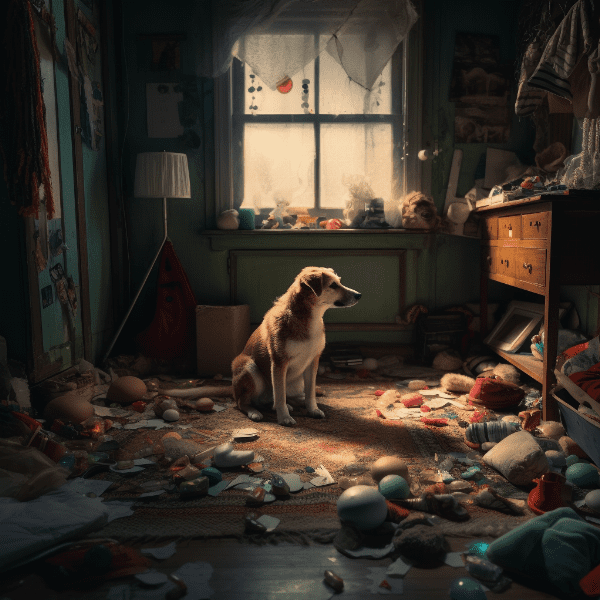
Signs of Separation Anxiety in Dogs
Dogs with separation anxiety may exhibit a range of symptoms when they are left alone or separated from their owners. These symptoms can vary in intensity, but they are generally consistent and occur whenever the dog is separated from their owner.
Vocalization
One of the most common signs of separation anxiety in dogs is excessive vocalization. Dogs may bark, whine, or howl when left alone, and this behavior can continue for long periods. If you live in an apartment or have neighbors in close proximity, excessive vocalization can cause problems and may lead to complaints.
Destructive Behavior
Dogs with separation anxiety may also engage in destructive behavior when left alone. They may chew on furniture, shoes, or other objects, scratch at doors or walls, or dig holes in the yard. This behavior is a way for the dog to cope with their anxiety, and it can be frustrating and expensive for owners.
Elimination
Some dogs with separation anxiety may also have accidents in the house, even if they are usually house-trained. They may urinate or defecate inside, and this behavior can be confusing and frustrating for owners.
Physical Symptoms
Dogs with separation anxiety may also exhibit physical symptoms such as shaking, panting, and pacing. These symptoms are a result of the dog’s anxiety and can be distressing to witness.
Other Behaviors
In some cases, dogs with separation anxiety may become clingy or overly attached to their owners. They may follow them around the house and become anxious if they are separated, even for a short time. Other dogs may become lethargic and withdrawn when left alone.
Recognizing the signs of separation anxiety in dogs is essential to address the issue and help your dog feel more comfortable when they are alone. In the next section, we will discuss the common causes of separation anxiety in dogs.
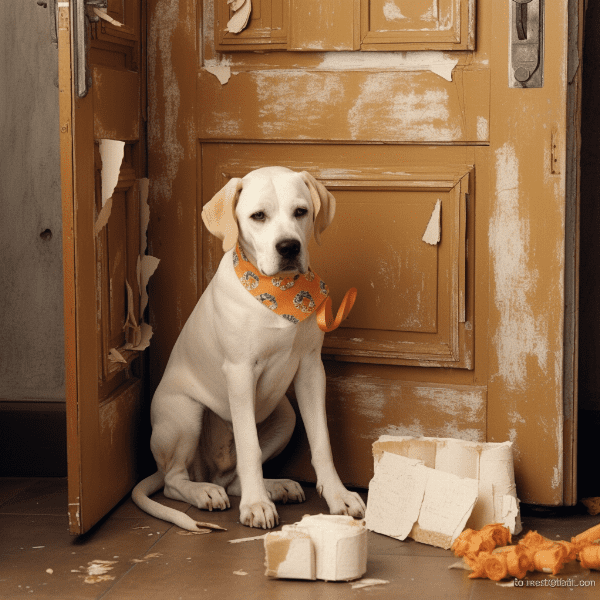
Causes of Dog Separation Anxiety at Night
Separation anxiety can have many different causes, and it’s important to identify the root cause of your dog’s anxiety to address the issue effectively.
Lack of Socialization
Dogs that were not socialized properly as puppies may be more prone to separation anxiety. Socialization involves exposing puppies to different people, animals, and environments to help them learn how to cope with new experiences. Dogs that were not socialized may become anxious and fearful when faced with new situations, including being left alone.
Changes in Routine
Changes in routine can also trigger separation anxiety in dogs. Dogs thrive on routine, and any significant changes can be stressful for them. For example, a change in the owner’s work schedule or a move to a new home can disrupt the dog’s routine and lead to anxiety.
Traumatic Experience
Traumatic experiences such as the loss of a family member, a stay at a kennel, or a natural disaster can also trigger separation anxiety in dogs. These events can be traumatic and may cause the dog to feel unsafe or fearful when left alone.
Overattachment
Dogs that are overly attached to their owners may also develop separation anxiety. If a dog is used to being with their owner all the time and suddenly finds themselves alone, they may become anxious and distressed.
Lack of Exercise
Finally, a lack of exercise can also contribute to separation anxiety in dogs. Dogs that are not getting enough exercise may become restless and anxious, making it difficult for them to settle down when left alone.
By identifying the root cause of your dog’s separation anxiety, you can take steps to address the issue effectively. In the next section, we will discuss some preventative measures you can take to help prevent separation anxiety from developing in the first place.
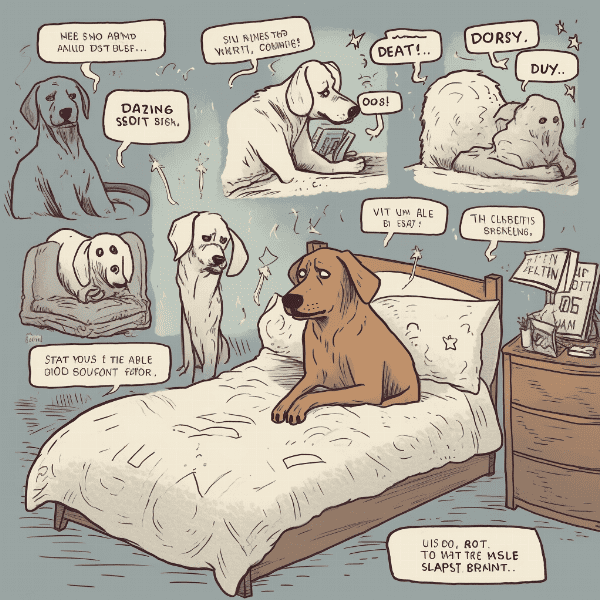
Prevention of Dog Separation Anxiety at Night
Preventing separation anxiety in dogs is much easier than treating it once it has developed. Here are some preventative measures you can take to help your dog feel comfortable and secure when left alone.
Exercise and Mental Stimulation
Providing your dog with plenty of exercise and mental stimulation can also help prevent separation anxiety. Dogs that are tired and mentally stimulated are more likely to rest and relax when left alone.
Consistent Routine
Maintaining a consistent routine is essential for preventing separation anxiety. Try to keep your dog’s routine as consistent as possible, even if your schedule changes. This can help your dog feel secure and reduce the risk of them developing anxiety.
Desensitization
Desensitization is another effective technique for preventing separation anxiety in dogs. This involves exposing your dog to the triggers that may cause anxiety, such as you leaving the house, and gradually desensitizing them to these triggers.
.
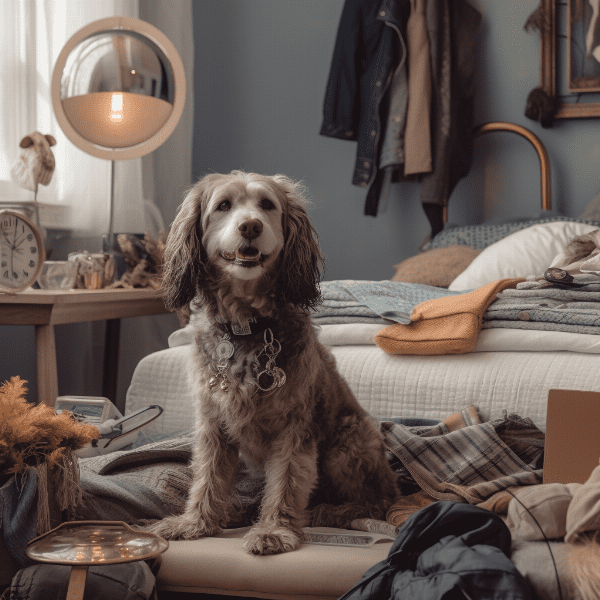
Coping Strategies for Dog Separation Anxiety at Night
If your dog is experiencing separation anxiety at night, there are several coping strategies you can use to help them feel more comfortable and secure.
Create a Calming Environment
Creating a calming environment for your dog can help reduce their anxiety when you are not around. This can include leaving a radio or TV on to provide background noise, using pheromone diffusers to help your dog feel more relaxed, and providing them with a comfortable bed or blanket to snuggle up in.
Avoid Punishment
It’s essential to avoid punishing your dog for their behavior when they are experiencing separation anxiety. Punishment can exacerbate the problem and make your dog even more anxious.
Reward Good Behavior
Instead of punishing your dog, it’s important to reward good behavior. When your dog remains calm and relaxed when you are not around, praise them and offer them treats. This positive reinforcement can help your dog associate being alone with positive experiences.
Use Toys and Treats
Providing your dog with toys and treats can also help reduce their anxiety when left alone. Toys can provide a distraction and keep your dog occupied, while treats can create positive associations with being alone.
Seek Professional Help
If your dog’s separation anxiety is severe, it may be necessary to seek professional help. A veterinarian or animal behaviorist can provide guidance and support to help your dog overcome their anxiety.
By using these coping strategies, you can help your dog feel more comfortable and secure when left alone at night. However, if your dog’s separation anxiety is severe, it may be necessary to seek professional help. In the next section, we will discuss some natural remedies that can be used to help reduce separation anxiety in dogs.
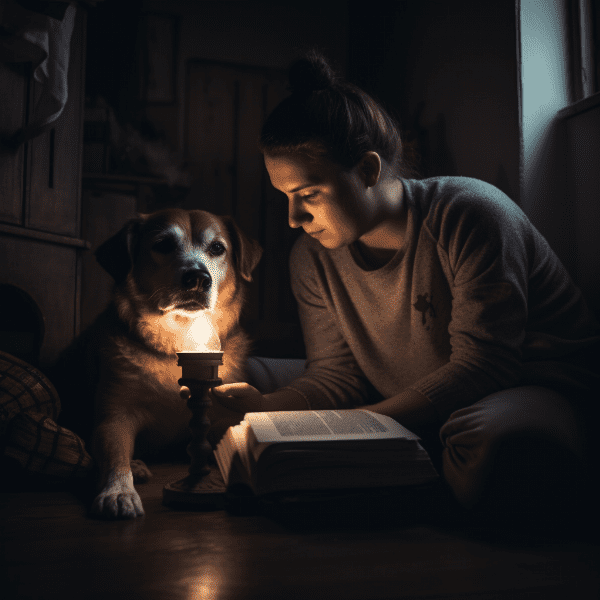
Creating a Calming Environment for Your Dog
Creating a calming environment for your dog can be an effective way to reduce their separation anxiety at night. Here are some tips for creating a comfortable and relaxing space for your dog:
Provide a Comfortable Bed
Providing your dog with a comfortable bed or blanket can help them feel more secure when they are alone. Make sure the bed is in a quiet, secluded area where your dog can rest and relax.
Use Pheromone Diffusers
Pheromone diffusers can help create a calming environment for your dog. These diffusers release synthetic pheromones that mimic the calming scent that mother dogs release to their puppies. They can help reduce anxiety and create a relaxing atmosphere for your dog.
Play Soothing Music
Playing soothing music can also help create a calming environment for your dog. Studies have shown that certain types of music can reduce stress and anxiety in dogs, so consider playing some soft, calming music for your dog when you leave the house.
Use a Crate or Playpen
Using a crate or playpen can also help create a comfortable and secure space for your dog. Dogs that are crate trained have a safe and familiar space where they can retreat to when they are feeling anxious.
Provide Distractions
Providing your dog with distractions can also help reduce their anxiety when you are not around. Consider leaving some interactive toys, puzzle feeders, or chew toys for your dog to play with.
Creating a calming environment for your dog can help reduce their separation anxiety at night. By providing a comfortable and relaxing space for your dog, you can help them feel more secure and comfortable when you are not around.
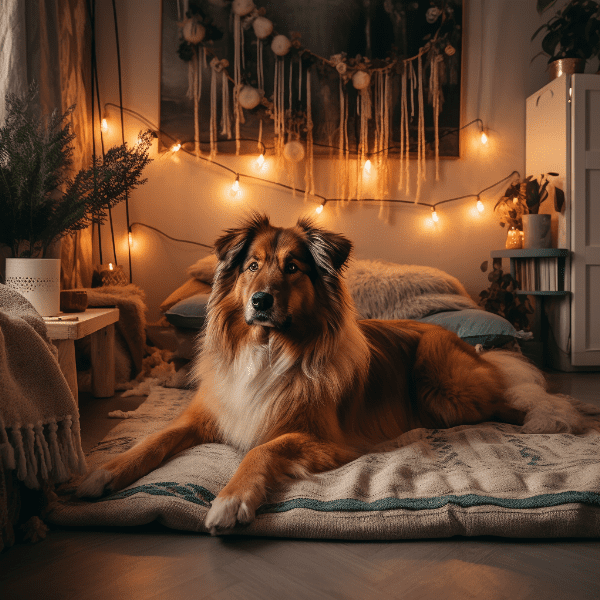
Training Techniques to Reduce Separation Anxiety
Counterconditioning
Counterconditioning is a technique that involves changing your dog’s emotional response to being alone. This is done by pairing being alone with positive experiences, such as treats or toys. Over time, your dog will start to associate being alone with positive experiences, which can reduce their anxiety.
Desensitization
Desensitization is a technique that involves gradually exposing your dog to the triggers that cause their anxiety, such as you leaving the house. Start by leaving your dog alone for short periods and gradually increase the amount of time they are alone. This can help your dog get used to being alone and reduce their anxiety.
Crate Training
Crate training can also be effective for reducing separation anxiety. Dogs that are crate trained have a safe and familiar space where they can retreat to when they are feeling anxious. Introduce the crate gradually and make it a comfortable and positive space for your dog.
Basic Obedience Training
Basic obedience training can also be effective for reducing separation anxiety. When your dog knows basic commands such as sit, stay, and come, they will feel more confident and secure. This can help reduce their anxiety when they are left alone.
Leave and Return Calmly
When leaving and returning to your home, it’s important to do so calmly and without making a big fuss. This can help reduce your dog’s anxiety and make them feel more relaxed.
Training techniques can be effective for reducing separation anxiety in dogs. By using these techniques, you can help your dog feel more comfortable and secure when they are alone.
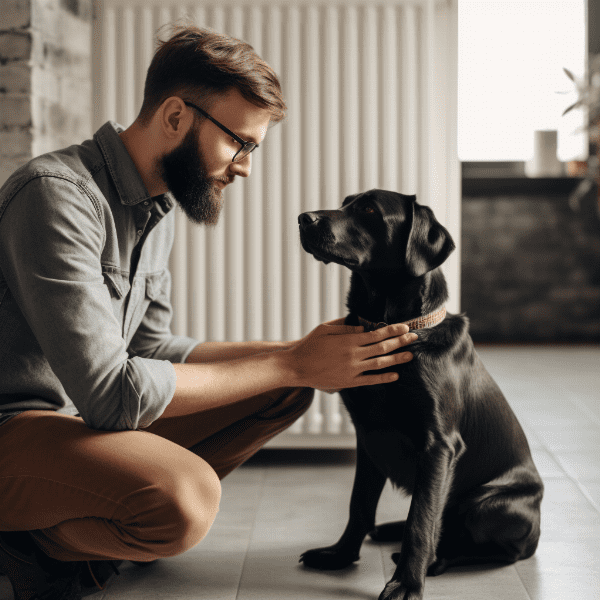
Natural Remedies for Dog Separation Anxiety at Night
In addition to training techniques and creating a calming environment, there are also natural remedies that can be used to reduce separation anxiety in dogs. Here are some natural remedies that you may want to consider:
CBD Oil
CBD oil has been shown to have calming effects on dogs and can help reduce anxiety. Talk to your veterinarian to see if CBD oil may be appropriate for your dog.
Herbal Supplements
Herbal supplements such as chamomile, valerian root, and passionflower can also have calming effects on dogs. These supplements can be given in the form of treats, drops, or capsules.
Essential Oils
Certain essential oils such as lavender and chamomile can also have calming effects on dogs. These oils can be diffused in the air or added to a carrier oil and applied topically to your dog’s collar.
Calming Music
As mentioned earlier, playing soothing music can help create a calming environment for your dog. Consider playing some calming music specifically designed for dogs to help reduce their anxiety.
Exercise
Regular exercise is essential for reducing anxiety in dogs. Make sure your dog is getting enough exercise, and try to incorporate activities that challenge their mind as well as their body.
Natural remedies can be effective for reducing separation anxiety in dogs, but it’s important to talk to your veterinarian before using any supplements or essential oils. By combining natural remedies with training techniques and a calming environment, you can help your dog feel more comfortable and secure when they are alone at night.
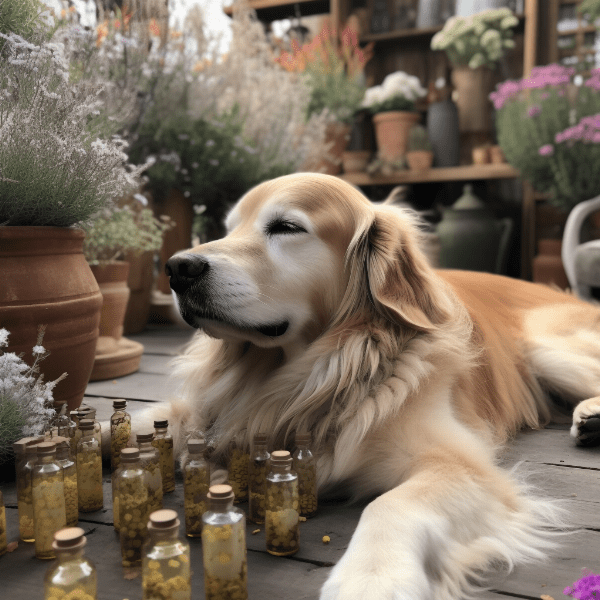
Seeking Professional Help for Dog Separation Anxiety
If your dog’s separation anxiety at night is severe, it may be necessary to seek professional help. Here are some options for seeking professional help:
Veterinarian
Your veterinarian can provide guidance and support for managing your dog’s separation anxiety. They may recommend supplements or medications to help reduce your dog’s anxiety.
Animal Behaviorist
An animal behaviorist can help assess your dog’s behavior and develop a customized plan for addressing their separation anxiety. They can also provide guidance on training techniques and create a behavior modification plan.
Training Classes
Training classes can also be effective for addressing separation anxiety in dogs. Look for classes that specifically address separation anxiety or talk to your trainer about developing a plan to address your dog’s anxiety.
Medications
In severe cases, your veterinarian may recommend medications to help reduce your dog’s anxiety. These medications can help your dog feel more relaxed and comfortable when left alone.
Remember that seeking professional help does not mean that you have failed as a pet owner. Separation anxiety can be a challenging issue to address, and it’s important to seek help if your dog’s anxiety is severe. With the help of a professional, you can develop a plan to help your dog feel more comfortable and secure when left alone at night.
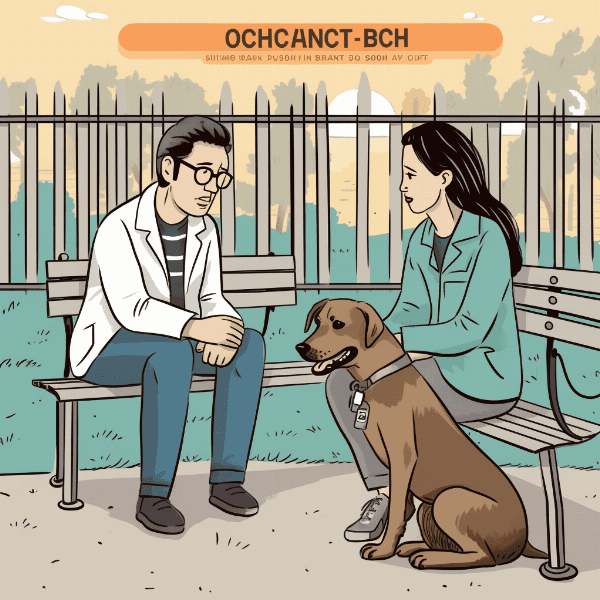
Conclusion and Final Thoughts on Coping with Dog Separation Anxiety at Night
Dealing with Dog separation anxiety at night can be challenging, but there are many strategies and techniques that can help. By understanding the signs and causes of separation anxiety, creating a calming environment, using training techniques, and seeking professional help if necessary, you can help your dog feel more comfortable and secure when left alone.
Remember that every dog is unique, and what works for one dog may not work for another. It’s important to be patient and persistent when addressing separation anxiety in dogs, and to seek professional help if your dog’s anxiety is severe.
With the right approach, you can help your dog overcome their separation anxiety and feel more comfortable and confident when left alone at night. By providing a safe and comfortable space for your dog, using natural remedies and training techniques, and seeking professional help when necessary, you can help your dog feel more relaxed and happy, and ensure that both you and your furry friend get a good night’s sleep.
